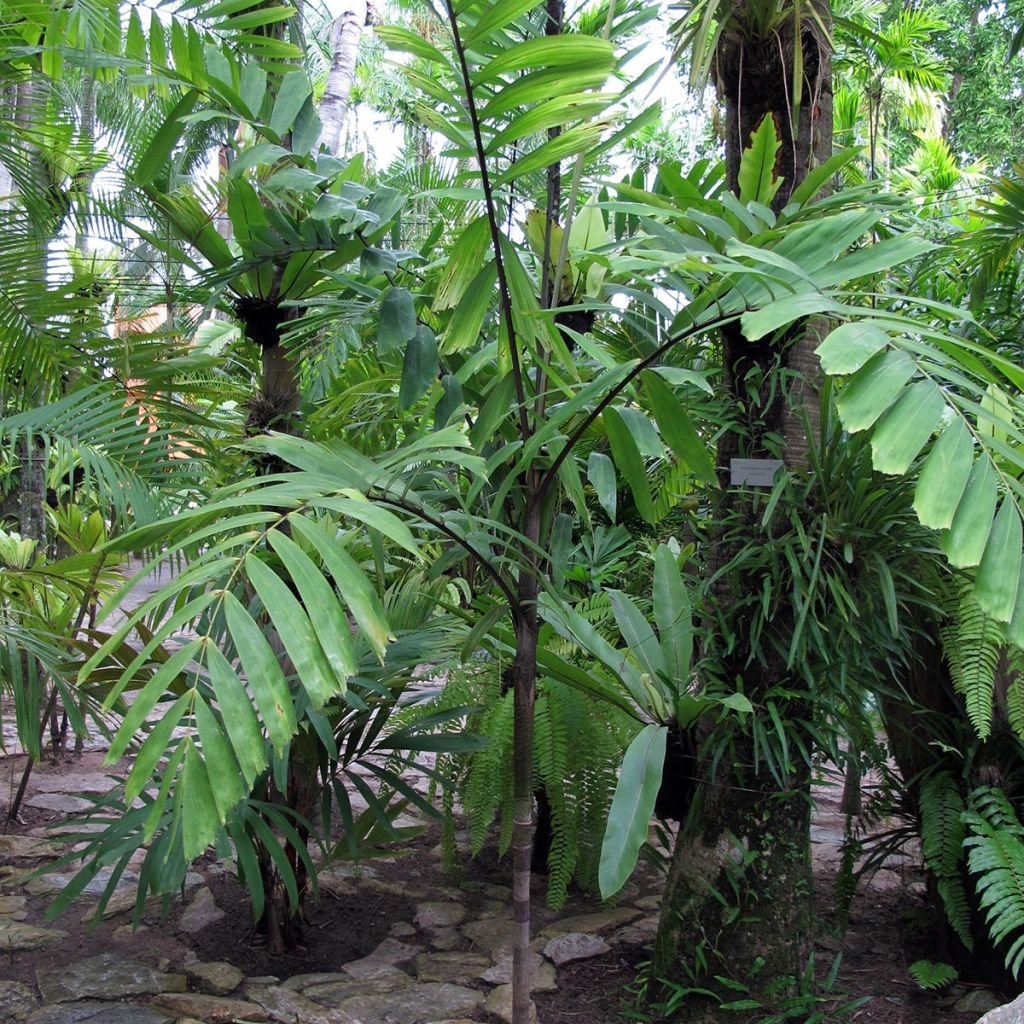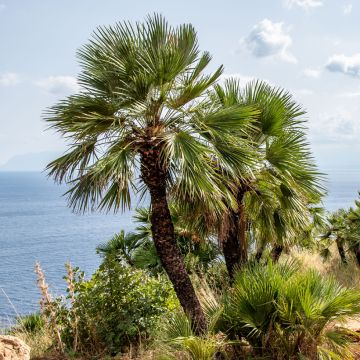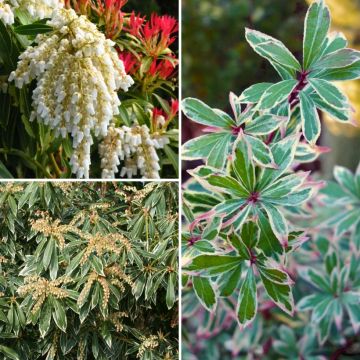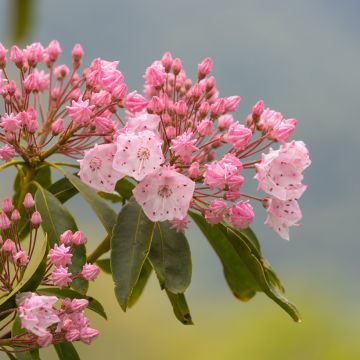

Veitchia vitiensis - Palmier
Veitchia vitiensis
Veitchia vitiensis
Special offer!
Receive a €20 voucher for any order over €90 (excluding delivery costs, credit notes, and plastic-free options)!
1- Add your favorite plants to your cart.
2- Once you have reached €90, confirm your order (you can even choose the delivery date!).
3- As soon as your order is shipped, you will receive an email containing your voucher code, valid for 3 months (90 days).
Your voucher is unique and can only be used once, for any order with a minimum value of €20, excluding delivery costs.
Can be combined with other current offers, non-divisible and non-refundable.
Why not try an alternative variety in stock?
View all →This plant carries a 24 months recovery warranty
More information
We guarantee the quality of our plants for a full growing cycle, and will replace at our expense any plant that fails to recover under normal climatic and planting conditions.
Would this plant suit my garden?
Set up your Plantfit profile →
Description
Veitchia vitiensis is a Fijian palm tree, rare in cultivation. It has a tropical temperament but is quite easy to grow in a greenhouse or very bright interior. This slender species is characterised by a particularly thin false trunk and a crown of large aerial and pinnate leaves, which are semi-erect. Not hardy, it can be grown in a container or a large pot, which allows it to be protected from the cold in winter. This species likes moist, rich and light soils, and a semi-shaded exposure.
Veitchia vitiensis belongs to the Arecaceae family. It is native to the Fiji islands in the southwest Pacific Ocean, where it grows in small populations in the primary forest, often on hillsides. This species of humid tropical climate dies below 0°C (32°F), but adapts well to indoor cultivation as long as winter temperatures range between 10 and 15°C (50 to 59°F) and the atmosphere remains humid. Young plants take some time to establish, then growth accelerates slightly. In the ground, Veitchia vitiensis can reach a height of 12 to 15m (39 to 49ft), but it will not exceed 3m (10ft) in height with a 1.5m (5ft) spread if grown in a container or indoors or in a greenhouse.
This Palm tree develops a unique trunk, called a stipe, which is very thin and tapered (25cm (10in) diameter at the base, but 4 to 5cm (2in) in diameter under the leaves), grey in colour, and strongly ringed with prominent leaf scars. At the top of this stipe, a beautiful foliage crown develops. It is composed of 8 to 10 large pinnate leaves, slightly arched, reaching 3m (10ft) in length. The leaves are divided into 30 to 40 pairs of rather wide lanceolate leaflets arranged almost horizontally. They are bright green in colour. The petiole that carries each leaf is short, pubescent, and brown in colour. Flowering occurs in summer, on mature plants aged 10 to 15 years, under favourable growing conditions. The inflorescences emerge under the leaves. They are erect and branched. Each one contains both male and female flowers, and are whitish-green in colour. The fruit is rounded to ellipsoid, measuring up to 19mm (1in) long.
With its well-groomed small palm tree appearance, it will make a sensation in a tropical greenhouse, or in a very bright room. It tolerates container cultivation well and can be taken out on a patio or balcony from May to September, after an acclimatisation period. Reserve a good spot on a patio, initially exposing it to shade so that it gradually gets used to the sun. Like all palm trees, it is difficult to associate with other plants due to its strong personality. Surround it with Phormium, which are sculptural, sober, and colourful, or with precise and geometric agaves or Cordyline, for example.
Report an error about the product description
Veitchia vitiensis in pictures


Plant habit
Flowering
Foliage
Botanical data
Veitchia
vitiensis
Arecaceae (Palmae)
Oceania
Other Palm trees A to Z
View all →Planting and care
Veitchia vitiensis is a frost-sensitive tropical plant that thrives in warm and humid environments and perishes below 0°C (32°F). It adapts well to container or large pot cultivation. Young plants are sensitive to direct sunlight, while mature individuals tolerate it better but still prefer filtered sunlight. It prefers non-calcareous soils (neutral to acidic), rich in humus, light, fertile, and kept moist throughout the growing season from spring to autumn. In winter, watering should be slightly reduced, but the growing medium should never completely dry out. It requires little maintenance, except for pruning the oldest fronds at the base of the stem if necessary.
Container cultivation:
Choose a large pot or a container with a perforated bottom, with a capacity of 40 litres. Prepare a mixture consisting of 25% ericaceous soil, 50% compost or humus, and 25% sand. Add a little crushed horn. Mix well. Partially fill your container, after placing a drainage layer at the bottom (clay pellets, gravel, broken clay pots, etc.). Place your palm on the mixture, ensuring that the collar (the area where the roots originate) does not exceed the rim of the pot but is not buried too deep in the substrate either. Add the remaining mixture around the root ball and firm it down. Water in stages to thoroughly saturate the substrate and eliminate air pockets.
Place your palm in a very bright location, avoiding direct harsh sunlight (not behind a window or glass door). In winter, the optimal temperature in the greenhouse or conservatory should be between 10 and 15°C (50 to 59°F). Mist the foliage regularly to counteract dry air. Clean the leaves with a sponge to remove dust. When outdoors, initially place it in shade and then in partial shade to protect its foliage. After two weeks in partial shade, you can gradually expose it to sunlight. Apply a complete liquid fertiliser for green plants once a month from March to August.
Planting period
Intended location
Care
This item has not been reviewed yet - be the first to leave a review about it.
Similar products
Haven't found what you were looking for?
Hardiness is the lowest winter temperature a plant can endure without suffering serious damage or even dying. However, hardiness is affected by location (a sheltered area, such as a patio), protection (winter cover) and soil type (hardiness is improved by well-drained soil).

Photo Sharing Terms & Conditions
In order to encourage gardeners to interact and share their experiences, Promesse de fleurs offers various media enabling content to be uploaded onto its Site - in particular via the ‘Photo sharing’ module.
The User agrees to refrain from:
- Posting any content that is illegal, prejudicial, insulting, racist, inciteful to hatred, revisionist, contrary to public decency, that infringes on privacy or on the privacy rights of third parties, in particular the publicity rights of persons and goods, intellectual property rights, or the right to privacy.
- Submitting content on behalf of a third party;
- Impersonate the identity of a third party and/or publish any personal information about a third party;
In general, the User undertakes to refrain from any unethical behaviour.
All Content (in particular text, comments, files, images, photos, videos, creative works, etc.), which may be subject to property or intellectual property rights, image or other private rights, shall remain the property of the User, subject to the limited rights granted by the terms of the licence granted by Promesse de fleurs as stated below. Users are at liberty to publish or not to publish such Content on the Site, notably via the ‘Photo Sharing’ facility, and accept that this Content shall be made public and freely accessible, notably on the Internet.
Users further acknowledge, undertake to have ,and guarantee that they hold all necessary rights and permissions to publish such material on the Site, in particular with regard to the legislation in force pertaining to any privacy, property, intellectual property, image, or contractual rights, or rights of any other nature. By publishing such Content on the Site, Users acknowledge accepting full liability as publishers of the Content within the meaning of the law, and grant Promesse de fleurs, free of charge, an inclusive, worldwide licence for the said Content for the entire duration of its publication, including all reproduction, representation, up/downloading, displaying, performing, transmission, and storage rights.
Users also grant permission for their name to be linked to the Content and accept that this link may not always be made available.
By engaging in posting material, Users consent to their Content becoming automatically accessible on the Internet, in particular on other sites and/or blogs and/or web pages of the Promesse de fleurs site, including in particular social pages and the Promesse de fleurs catalogue.
Users may secure the removal of entrusted content free of charge by issuing a simple request via our contact form.
The flowering period indicated on our website applies to countries and regions located in USDA zone 8 (France, the United Kingdom, Ireland, the Netherlands, etc.)
It will vary according to where you live:
- In zones 9 to 10 (Italy, Spain, Greece, etc.), flowering will occur about 2 to 4 weeks earlier.
- In zones 6 to 7 (Germany, Poland, Slovenia, and lower mountainous regions), flowering will be delayed by 2 to 3 weeks.
- In zone 5 (Central Europe, Scandinavia), blooming will be delayed by 3 to 5 weeks.
In temperate climates, pruning of spring-flowering shrubs (forsythia, spireas, etc.) should be done just after flowering.
Pruning of summer-flowering shrubs (Indian Lilac, Perovskia, etc.) can be done in winter or spring.
In cold regions as well as with frost-sensitive plants, avoid pruning too early when severe frosts may still occur.
The planting period indicated on our website applies to countries and regions located in USDA zone 8 (France, United Kingdom, Ireland, Netherlands).
It will vary according to where you live:
- In Mediterranean zones (Marseille, Madrid, Milan, etc.), autumn and winter are the best planting periods.
- In continental zones (Strasbourg, Munich, Vienna, etc.), delay planting by 2 to 3 weeks in spring and bring it forward by 2 to 4 weeks in autumn.
- In mountainous regions (the Alps, Pyrenees, Carpathians, etc.), it is best to plant in late spring (May-June) or late summer (August-September).
The harvesting period indicated on our website applies to countries and regions in USDA zone 8 (France, England, Ireland, the Netherlands).
In colder areas (Scandinavia, Poland, Austria...) fruit and vegetable harvests are likely to be delayed by 3-4 weeks.
In warmer areas (Italy, Spain, Greece, etc.), harvesting will probably take place earlier, depending on weather conditions.
The sowing periods indicated on our website apply to countries and regions within USDA Zone 8 (France, UK, Ireland, Netherlands).
In colder areas (Scandinavia, Poland, Austria...), delay any outdoor sowing by 3-4 weeks, or sow under glass.
In warmer climes (Italy, Spain, Greece, etc.), bring outdoor sowing forward by a few weeks.


















































